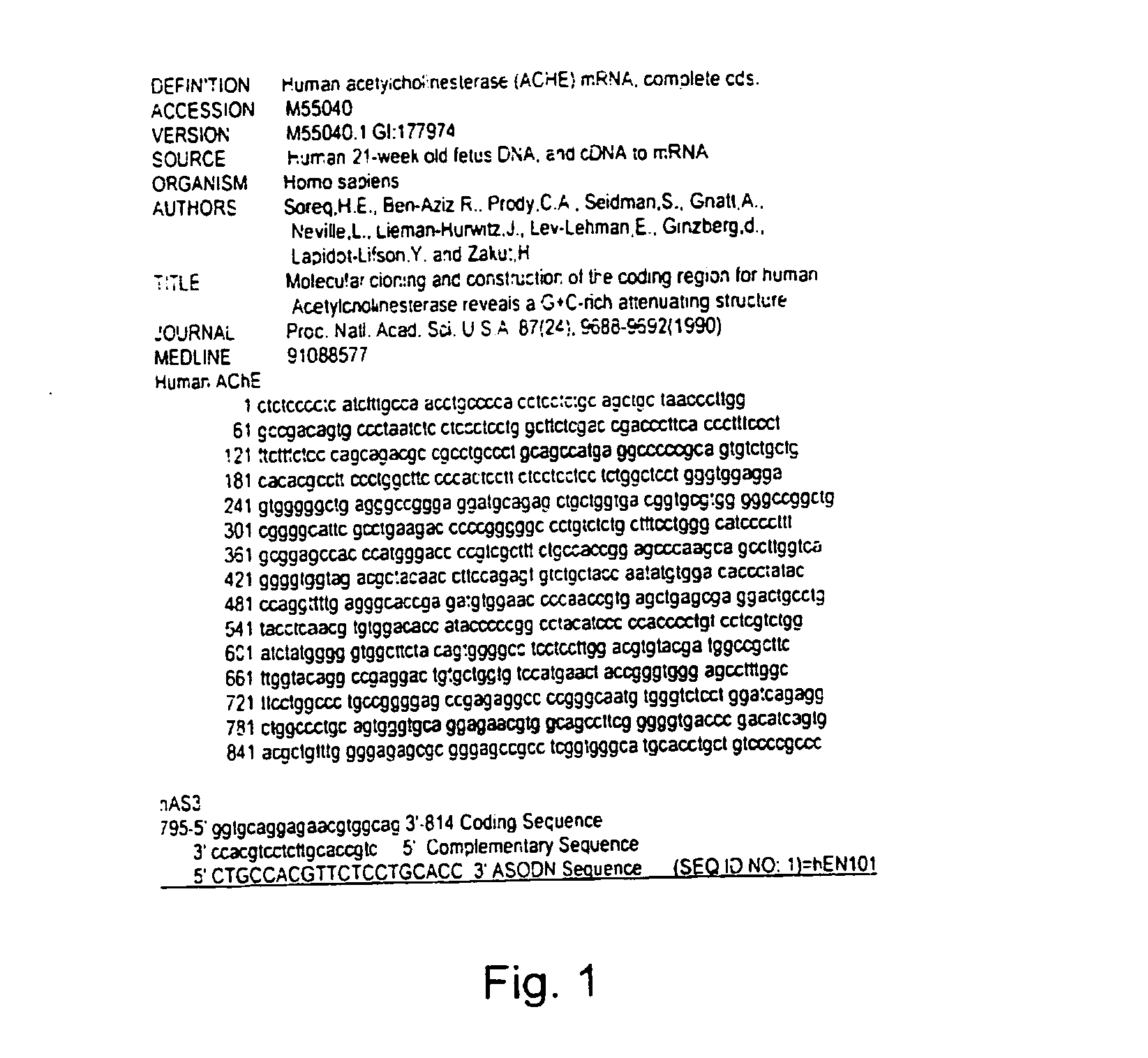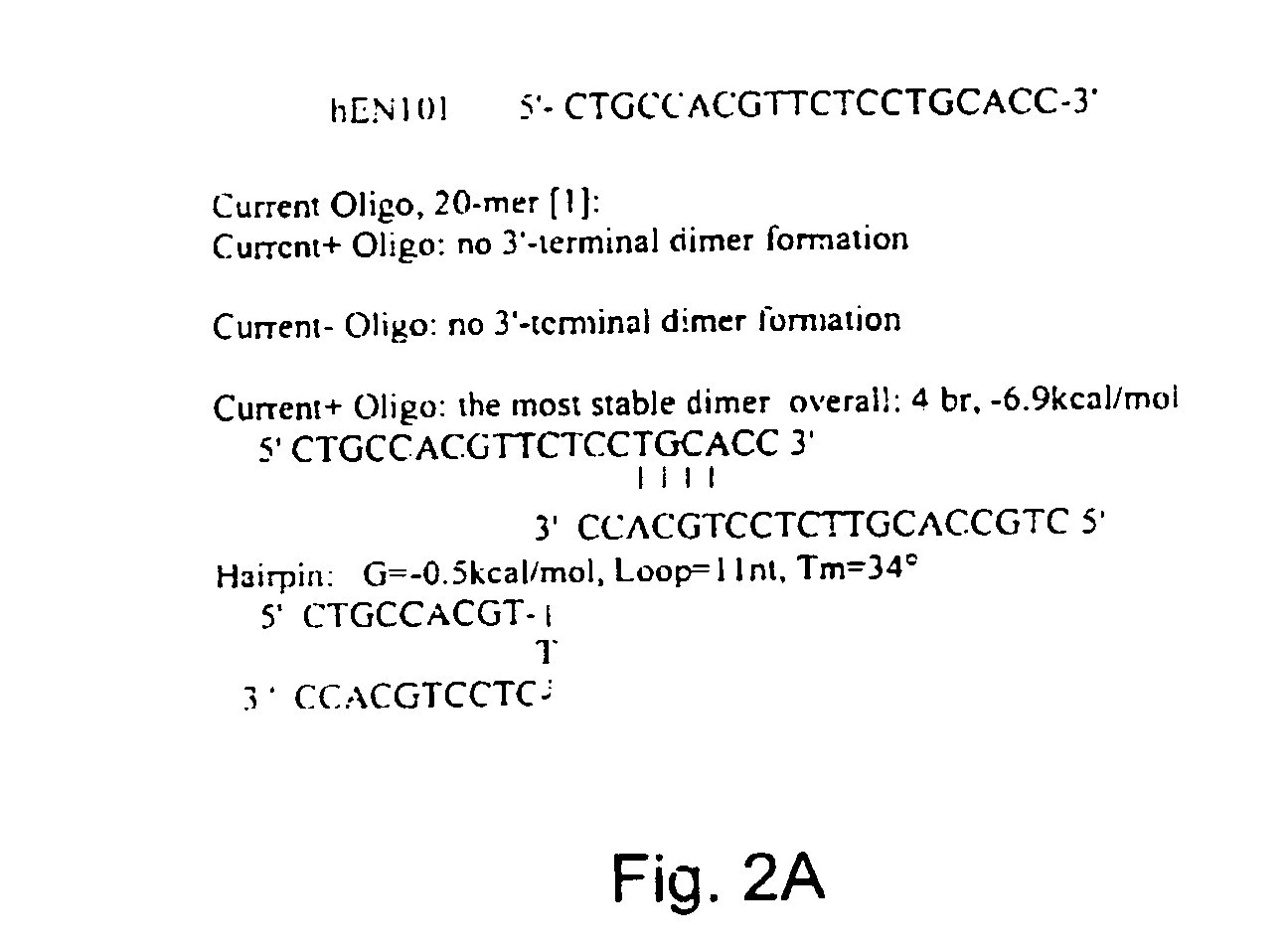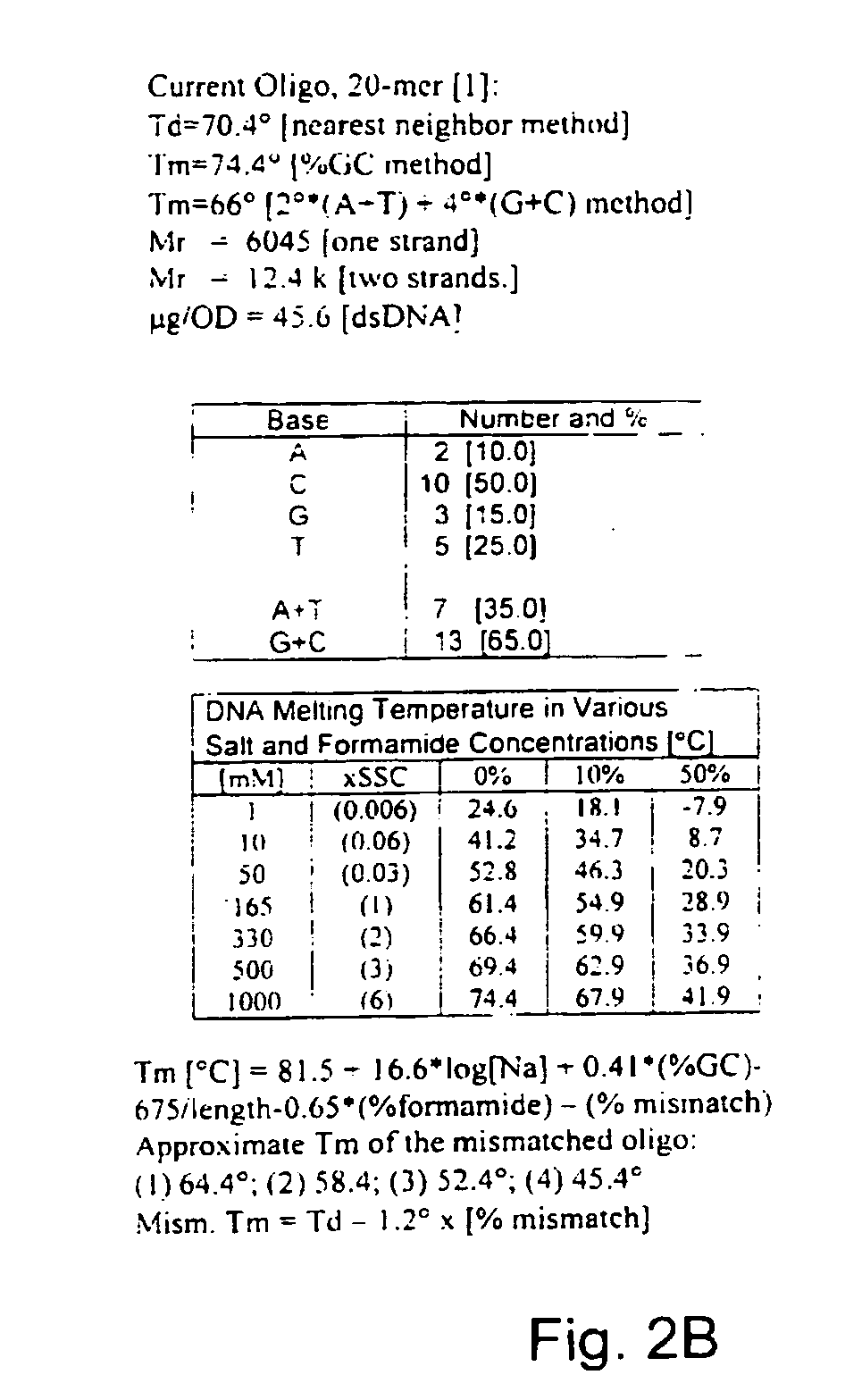Antisense oligonucleotide against human acetylcholinesterase (AChE) and uses thereof
a technology of acetylcholinesterase and antisense oligonucleotide, which is applied in the direction of drug composition, peptide/protein ingredients, muscular disorders, etc., can solve the problems of short-lived effects, all currently employed mg drug regimens are associated with deleterious long-term consequences, and it is not clear whether they are harmful to human health. , to achieve the effect of reducing muscle fatigue and improving stamina in physical exercis
- Summary
- Abstract
- Description
- Claims
- Application Information
AI Technical Summary
Benefits of technology
Problems solved by technology
Method used
Image
Examples
example 1
AChE-R Accumulate in Blood and Muscle of EAMG Rats
[0188] As previously shown by the inventors, the AChE-R variant migrates on non-denaturing polyacrylamide gels faster than the tetrameric synaptic enzyme, AChE-S [Kaufer et al. (1998) id ibid.], and it is present in the serum of MG patients [WO01 / 36627]. Similarly, immunoblot analysis confirmed that in EAMG rats, as compared with healthy rats, there was a massive increase in serum AChE-R (FIG. 7).
[0189] Expression of alternative AChE variants (FIG. 8A), as well as of the nicotinic acetylcholine receptor (nAChR), was tested in control and EAMG rats. Depletion of nAChR in muscle sections from EAMG rats was detected, as evidenced by a quantitative immunoassay using antibodies against nAChR (FIG. 8B, 1 and 2). The immunostaining showed that muscle nAChR was reduced by 48±7% from normal values in 10 mildly affected animals (disease grade 1-2, see Experimental Procedures) and by 75±5% in 10 severely affected rats (grade 4) compared to co...
example 2
AChE-R and AChE-R mRNA Levels in Muscle Respond to rEN101
[0191] The soluble and secretory nature of AChE-R predicted that it would degrade acetylcholine before it reaches the post-synaptic membrane, limiting receptor activation. To test this hypothesis, rEN101 antisense oligonucleotide was used, which is capable of selective suppression of AChE-R production [Galyam, N. et al. (2001) Antisense Nucl Acid Drug Dev 11, 51-57]. AChE-R suppression was tested in healthy and EAMG rats with reduced muscle nAChR levels (FIG. 8B, 1 and 2) 24 h after a single i.v. injection of 250 g / Kg rEN101. Immunohistochemical staining demonstrated that AChE-R, but not AChE-S, was significantly reduced in muscles from both healthy and EAMG rats (FIG. 8C, 3 and 4 and data not shown). Receptor labeling patterns remained high in healthy rats and low in EAMG animals, similar to those of untreated animals and animals treated with r-invEN102 (compare FIG. 8B, 1 and 2 to FIG. 8C, 1 and 2). In situ hybridization in...
example 3
Suppression of AChE-R Restores Normal CMAP in EAMG Rats
[0192] Quantification by densitometry of an immunoblot analysis confirmed the increase of serum AChE-R in EAMG and the efficacy of a single i.v. injection of 250 μg / Kg rEN101, but not r-invEN102, in reducing its serum level 24 h later (FIG. 9A). To evaluate the physiological outcome of this suppression, compound muscle action potentials (CMAPs) from the gastrocnemius muscle were recorded. EAMG rats, but never healthy animals, displayed a decline in CMAP during repeated stimulation at 3 Hz. The baseline decline, the percent difference in the heights of the fifth and the first evoked potentials, ranged from 10% to 36% (mean±SEM=13.0±2.5%, FIG. 9B, inset) as compared to 4.0±0.9% among healthy rats. The standard therapy for MG patients is administration of anti-cholinesterases, which elevate ACh levels to a threshold that enables receptor activation. Accordingly, neostigmine bromide (Prostigmine™, 75 μg / kg) was administered via i.p...
PUM
| Property | Measurement | Unit |
|---|---|---|
| residence time | aaaaa | aaaaa |
| time | aaaaa | aaaaa |
| diameters | aaaaa | aaaaa |
Abstract
Description
Claims
Application Information
 Login to View More
Login to View More - R&D
- Intellectual Property
- Life Sciences
- Materials
- Tech Scout
- Unparalleled Data Quality
- Higher Quality Content
- 60% Fewer Hallucinations
Browse by: Latest US Patents, China's latest patents, Technical Efficacy Thesaurus, Application Domain, Technology Topic, Popular Technical Reports.
© 2025 PatSnap. All rights reserved.Legal|Privacy policy|Modern Slavery Act Transparency Statement|Sitemap|About US| Contact US: help@patsnap.com



